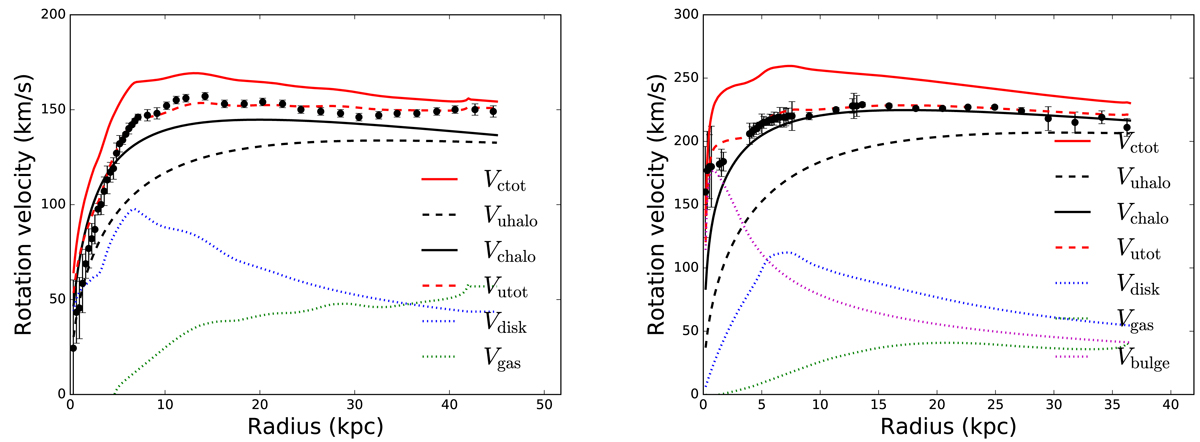Fig. 1.

Download original image
Examples of compressed DM halos in NGC 3198 (left) and UGC 06786 (right). Points with error bars are the observed rotation curves, adjusted to the best-fit disk inclinations. Green, blue, and purple dotted lines represent the contributions of gas, disk, and bulge, respectively, which have been adjusted according to the best-fit stellar mass-to-light ratios and galaxy distances as in Li et al. (2020). Black dashed lines show the contribution of best-fit “static” NFW halos, while red dashed lines are the total rotation curve fits from Li et al. (2020). Black solid lines show the contributions of compressed DM halos, and red solid lines are the corresponding total rotation curves. Compressed halos overshoot the data in both cases. The magnitude of the compression is illustrated by the difference between the dashed and solid black lines. Halo compression is a non-negligible effect in massive galaxies: the realistic dark matter halo must differ from a purely NFW form.
Current usage metrics show cumulative count of Article Views (full-text article views including HTML views, PDF and ePub downloads, according to the available data) and Abstracts Views on Vision4Press platform.
Data correspond to usage on the plateform after 2015. The current usage metrics is available 48-96 hours after online publication and is updated daily on week days.
Initial download of the metrics may take a while.


